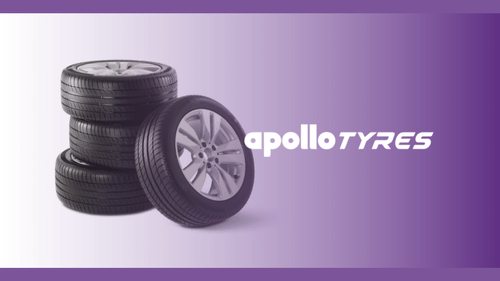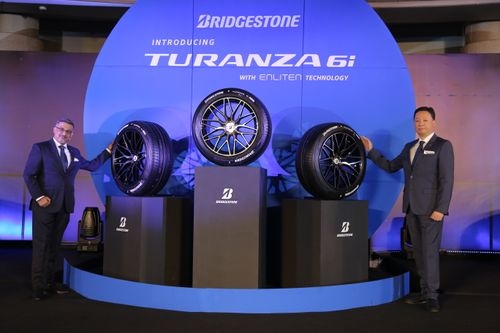Ad
Ad
Ceat Targets 12 Market Share in the Next Two Years
Tyre major Ceat sets its sights on a 12% market share in the next two years, supported by a new production line in Chennai and strong OEM partnerships.

Tyre major Ceat is aiming for a significant increase in its market share, targeting 12% over the next two years, according to Arnab Banerjee, the company’s Managing Director and CEO. Ceat, currently the fourth-largest player in the Indian tyre market, produced over 48 million tyres in FY24.
The company achieved a turnover of INR 11,893 crore during FY24 and has set a target of reaching INR 17,000 crore in revenue over the next three years.
Recent Market Share Growth
In a press briefing, Banerjee highlighted that Ceat’s market share has already increased by 1%, from 7% to 8% in recent months. "Our immediate milestone is to reach a market share of 12%-13% within the next two years.
This growth will be driven not only by the replacement market but also by increased Original Equipment Manufacturer (OEM) partnerships. The start of our new production line at the plant near Chennai will further boost this growth," he said.
Expansion of Sriperumbudur Facility
On Wednesday, Ceat inaugurated a new Truck Bus Radial (TBR) production line at its facility in Sriperumbudur, near Chennai. This expansion, made with an investment of INR 670 crore, will enable the plant to produce 1,500 tyres daily over the next 12 months. The output will be distributed across various segments, with 40% for the replacement market, 35% for exports, and 25% for OEMs.
Banerjee emphasised that the Chennai facility is poised to become the largest of Ceat’s six manufacturing plants in India. He noted that significant future investments would be directed towards this plant, which is primarily focused on exports, particularly to Europe and the US.
Future Price Increases
When asked about the possibility of increasing tyre prices, Banerjee acknowledged the pressure from rising natural rubber costs. "A price increase of 1%-2% may be necessary, but the timing will depend on competitive factors," he said.
Product Range
Ceat manufactures tyres for a diverse range of vehicles, including two-wheelers, three-wheelers, passenger and utility vehicles, commercial vehicles, and off-highway vehicles.
Ad
Ad
More News

MRF Showcases Breakthrough Tyres at Bharat Mobility Expo 2025
MRF introduces its theme "Muscle in Motion" at the Bharat Mobility Global Expo 2025, showcasing innovations like Aeromuscle tyres, EV tyres with Acoustic Foam Technology, and more, highlighting the company’s leadership in the tyre industry.
22-Jan-2025 07:17 AM
Read Full News
MRF Showcases Breakthrough Tyres at Bharat Mobility Expo 2025
MRF introduces its theme "Muscle in Motion" at the Bharat Mobility Global Expo 2025, showcasing innovations like Aeromuscle tyres, EV tyres with Acoustic Foam Technology, and more, highlighting the company’s leadership in the tyre industry.
22-Jan-2025 07:17 AM
Read Full News
Bridgestone India Brings Advanced ENLITEN Tyres to Bharat Mobility Global EXPO 2025
Bridgestone India is showcasing its ENLITEN Technology tyres at the Bharat Mobility Global EXPO 2025, focusing on performance, comfort, and sustainability for both traditional and electric vehicles.
20-Jan-2025 06:19 AM
Read Full News
Bridgestone India Brings Advanced ENLITEN Tyres to Bharat Mobility Global EXPO 2025
Bridgestone India is showcasing its ENLITEN Technology tyres at the Bharat Mobility Global EXPO 2025, focusing on performance, comfort, and sustainability for both traditional and electric vehicles.
20-Jan-2025 06:19 AM
Read Full News
JK Tyre Announces Third Price Hike in FY25: Know Why?
JK Tyre has announced its third price increase in FY25 due to rising raw material costs. The hike, ranging from 1-2%, comes amid expectations of a demand recovery in the automotive sector.
06-Nov-2024 09:44 AM
Read Full News
JK Tyre Announces Third Price Hike in FY25: Know Why?
JK Tyre has announced its third price increase in FY25 due to rising raw material costs. The hike, ranging from 1-2%, comes amid expectations of a demand recovery in the automotive sector.
06-Nov-2024 09:44 AM
Read Full News
Yokohama Supplies ADVAN Sport V107 Tires for BMW Premium SAVs
Yokohama partners with BMW, supplying top-notch "ADVAN Sport V107" tires for premium SAVs, ensuring superior performance and durability globally.
25-Apr-2024 04:45 PM
Read Full News
Yokohama Supplies ADVAN Sport V107 Tires for BMW Premium SAVs
Yokohama partners with BMW, supplying top-notch "ADVAN Sport V107" tires for premium SAVs, ensuring superior performance and durability globally.
25-Apr-2024 04:45 PM
Read Full News
Apollo Tyres receives INR 2.06 Cr GST Penalty from Tamil Nadu Officials
Apollo Tyres faces INR 2.06 Cr GST penalty in Tamil Nadu over alleged irregularities in input tax credit.
18-Apr-2024 06:17 PM
Read Full News
Apollo Tyres receives INR 2.06 Cr GST Penalty from Tamil Nadu Officials
Apollo Tyres faces INR 2.06 Cr GST penalty in Tamil Nadu over alleged irregularities in input tax credit.
18-Apr-2024 06:17 PM
Read Full News
Bridgestone Introduces TURANZA 6i: A New Premium Tyre for Luxury Passenger Vehicles
Get to know about Bridgestone's newest addition, TURANZA 6i, the premium tyre tailored for luxury passenger vehicles.
10-Apr-2024 06:41 PM
Read Full News
Bridgestone Introduces TURANZA 6i: A New Premium Tyre for Luxury Passenger Vehicles
Get to know about Bridgestone's newest addition, TURANZA 6i, the premium tyre tailored for luxury passenger vehicles.
10-Apr-2024 06:41 PM
Read Full NewsAd
Ad






